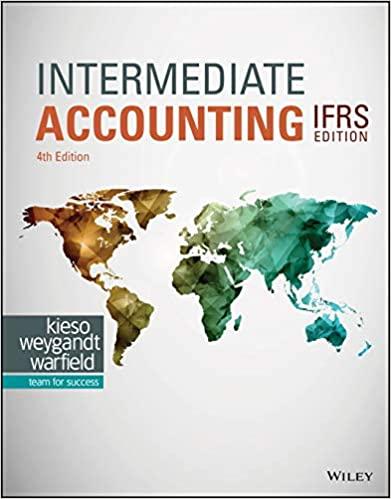GridCo Ghana is planning ahead of how to use its mix of available electricity generation plants to meet electricity demand for the year 2022. It
GridCo Ghana is planning ahead of how to use its mix of available electricity generation plants to meet electricity demand for the year 2022. It currently has at its disposal seven different types of plants ranging from Hydro Electric (HYDRO), Combined Cycle Gas Turbine (CCGT1 and CCGT2), Open Cycle Gas Turbine (OCGT), Coal (CL), Wind (W), and Solar (S) that it can use to meet the 2022 demand. Table 1 provides relevant technical and operational cost data on the different plants.
Generator Type | Available Capacity (MW) | Availability Factor | Operational Cost ($/MWh) | Emissions Cost ($/MWh) |
HYDRO | 1360 | 60% | 2 | 0 |
CCGT1 | 1100 | 50% | 70 | 7 |
CCGT2 | 900 | 55% | 67 | 8 |
OCGT | 1000 | 60% | 178 | 10 |
COAL | 400 | 68% | 30 | 18 |
WIND | 100 | 17% | 10 | 0 |
SOLAR | 200 | 20% | 2 | 0 |
Note that electricity demand is in either Megawatts hour (MWh) or Gigawatts hour (GWh), whereas plant capacity is in Megawatts (MW). Thus, for instance, a plant of say 200MW is capable of producing, in a 10-hour window, an amount of 200MW*10h = 2000MWh. However, it is possible that the plant might not be fully available for the 10 hours due to several factors including making time for maintenance, fuel shortage, etc. Because of this, the 2000MWh which is the maximum it can generate in 10 hours must be multiplied by the availability factor (as indicated in column 3 of Table 1). For example, if the availability factor is 60%, then the total electricity the plant can generate within the 10 hours interval is 200MW*10h*0.6 = 1200MWh.
Table 1 also gives the cost of operation, which factors into account fuel cost, fixed operating and maintenance cost, and another variable cost, for every MWh of electricity generated by a plant. In addition, GridCo has been tasked by the government to surcharge the plant for the emissions that accompany every MWh of electricity generated.
Whatever GridCo does, it must adhere to contractual obligations. The current contract agreement requires that GridCo buys, respectively, not less than 50%, 90%, and 90% of the electricity that an OCGT, WIND, and SOLAR plants are capable of generating (i.e. after accounting for availability factor).
GridCo can also purchase electricity from neighboring countries at a cost of $250/MWh if it so desires.
Demand in 2022 is not certain but is expected to be any of the data points shown in Table 2 below.
Table 2: Possible electricity demand (in GWh) in 2022
21696 | 24085 | 19454 | 21578 | 23862 | 22344 | 19169 | 21320 | 22201 | 21379 |
21280 | 21985 | 21022 | 22066 | 22337 | 21635 | 23212 | 21219 | 22699 | 23670 |
Let, be the total electricity generated in a year by the HYDRO, CCGT1, CCGT2, OCGT, COAL, WIND, and SOLAR plants respectively, and , the amount of electricity imported from neighboring countries.
Though demand is uncertain, use the average of the possible demands to represent the demand expected in 2022.
Assume there are 365 days in a year and answer the following questions.
i. What do you think is the implicit objective of GridCo in meeting the electricity demand expected in 2022? Explain.
ii. Formulate a linear programming model to help GridCo achieve its objective
iii. Indicate how GridCo should utilize its available generation plants, as well as the size of imports to meet the 2022 demand, and calculate the related objective function value.
iv. What percentage of the demand is met by plants HYDRO, OCGT1, and OCGT2?
v. Suppose demand were to increase by 40% of the expected demand, resolve the LP model above and find the new (ii), and (iii).
vi. From the problem in (v), interpret all the shadow prices of an MWh of electricity-related to HYDRO, CCGT1, CCGT2, OCGT, WIND, SOLAR, and imports, as well as demand. Make sure to give a practical interpretation.
vii. Suppose the cost of 1MWh of unserved demand is $230/MWh. Will it be advisable to limit the utilization of some plants? If so which one(s)? If not, why not, and what is the best thing to do? Make sure to give a practical interpretation.
viii. Suppose the cost of 1MWh of unserved demand is $230/MWh. If not meeting the contractual obligation of OCGT, WIND, and SOLAR incurs a judgment debt of $210/MWh, $235/MWh, and $240/MWh respectively, which of the plants will you advise GridCo to not fully utilize?
Step by Step Solution
3.48 Rating (164 Votes )
There are 3 Steps involved in it
Step: 1
Answer i The implicit objective of GridCo in meeting the electricity demand expected in 2022 is likely to minimize the total cost of electricity generation while ensuring that the demand is fully met ...
See step-by-step solutions with expert insights and AI powered tools for academic success
Step: 2

Step: 3

Ace Your Homework with AI
Get the answers you need in no time with our AI-driven, step-by-step assistance
Get Started


